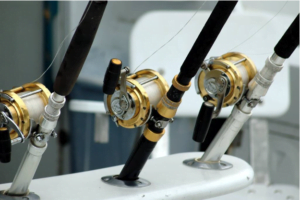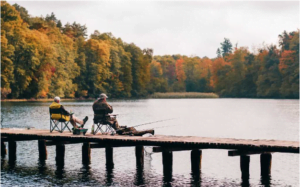 Five Interesting Facts You Didn’t Know About Fishing.
Five Interesting Facts You Didn’t Know About Fishing.
In this article, we reveal five interesting facts about fishing as a sport that you are unlikely to know. Please go check it out.
Five Fish Facts
For some, fishing is an excuse to get outside, crack open a cold drink, and spend the afternoon with good friends. Others see it as a competitive lifestyle. Bass tournaments first appeared in the 1960s and have grown to become one of the country’s most popular sports. Fishing can be a rewarding solitary sport, but now and then, you want to spice up your day on the water.
 There are even some angling competitions that are held online. These tournaments have online platforms where competitors can upload their most impressive catches, the size of the catch, and other angling variables. The shared data is then verified and evaluated using specialized fishing algorithms. I have even seen people betting on these competitions. Don’t believe me? Go check out the latest sports betting promotions and see for yourself.
There are even some angling competitions that are held online. These tournaments have online platforms where competitors can upload their most impressive catches, the size of the catch, and other angling variables. The shared data is then verified and evaluated using specialized fishing algorithms. I have even seen people betting on these competitions. Don’t believe me? Go check out the latest sports betting promotions and see for yourself.
Bring a few friends and spend the day competing in a friendly competition. While you wait for bites, share some facts and stories with your companions. So get involved!
- Most fish have darker upper parts of their bodies, which scientists call countershading. Their color gradually lightens as you progress down. Scientists believe that this helps fish defend themselves against predators looking down from above. The fish’s countershading makes them harder to see from above.
- Every day, we read about different species of fish breaking records after being caught by various anglers across the country. The largest fish ever caught on record, however, is a 2,664-pound great white shark caught in 1959 by Alfred Dean of Irymple, Victoria. He caught this massive creature in just 50 minutes by using a porpoise as bait on a 130-pound line!
- When humans first began fishing, they used nets and their bare hands to catch their prey. But you can only do so much fishing in shallow water. So the fishing hook appeared. A gorge was the name given to the first fishing hook. It was a short, straight piece of wood, bone, or stone with both ends pointed. It was attached to a line, and bait was placed over it. To catch a fish, the hook was then tossed into the water. The oldest fishhooks are estimated to be 23,000 years old. They were constructed from sea snail shells.
- Adult salmon that live in saltwater migrate a long distance to spawn in freshwater. On their spawning journeys, salmon can travel up to 50 km per day, equivalent to us running more than a marathon daily. Their migration can cover up to 3000 km from the ocean upstream through freshwater to where they will spawn. Their journey is equivalent to driving halfway across Canada! The migration would be impossible if salmon were not such good swimmers. Swimming upriver is difficult, but salmon are excellent jumpers and can jump up to two meters over obstacles.
- There are approximately 33,600 fish species and over 3,500,000 fish in the world. The Pacific Ocean, the world’s largest ocean, is home to roughly 70% of the world’s species. You may wonder how scientists can determine the number of species and fishes. They use various methods to quantify fish populations, such as tracking and monitoring trends. Furthermore, with the assistance of cutting-edge technologies such as new artificial intelligence, GPS, drones, and autonomous sonar, the process is not as complicated as it appears. However, this is still only an estimate. Approximately 80% of the ocean remains unexplored, unmapped, and unvisited by humans.
 It is commonly assumed that fishing is a solitary activity with no element of competition. While this statement contains some truth, it is not entirely correct. Every year, numerous competitions are held for fishing enthusiasts. The first bass tournament in the United States was held in June 1967 on Beaver Lake in Arkansas. It attracted over 100 anglers. Each year, it is estimated that 30,000 to 50,000 fishing tournaments and derbies are held in the United States alone. Each contest can last anywhere from 6 to 10 hours to several days.
It is commonly assumed that fishing is a solitary activity with no element of competition. While this statement contains some truth, it is not entirely correct. Every year, numerous competitions are held for fishing enthusiasts. The first bass tournament in the United States was held in June 1967 on Beaver Lake in Arkansas. It attracted over 100 anglers. Each year, it is estimated that 30,000 to 50,000 fishing tournaments and derbies are held in the United States alone. Each contest can last anywhere from 6 to 10 hours to several days.


 Five Interesting Facts You Didn’t Know About Fishing.
Five Interesting Facts You Didn’t Know About Fishing.